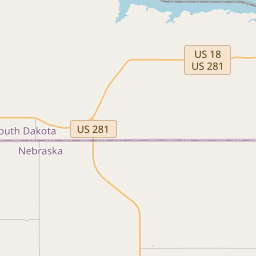Civil War Changes
Historical marker location:






April 12, 1861: The Civil War begins with the Confederate attack on Fort Sumter, located in South Carolina's Charleston Harbor.
April 15, 1861: President Abraham Lincoln issues a call for 75,000 volunteers to serve in the Union Army to suppress the rebellion.
May 24, 1861: The first major land battle, known as the First Battle of Bull Run (or First Battle of Manassas), takes place in Virginia. It ends in Confederate victory.
September 17, 1862: The Battle of Antietam in Maryland becomes the bloodiest single-day battle in American history, with heavy casualties on both sides. The Union forces, commanded by General George McClellan, manage to halt Confederate General Robert E. Lee's advance into Union territory.
January 1, 1863: President Lincoln issues the Emancipation Proclamation, declaring that all slaves in Confederate-held territories are to be set free. However, the proclamation does not immediately free all slaves in the United States.
July 1-3, 1863: The Battle of Gettysburg in Pennsylvania takes place, resulting in a significant Union victory and inflicting heavy casualties on Confederate forces. It marks a turning point in the war.
November 19, 1863: President Lincoln delivers the Gettysburg Address, emphasizing the principles of liberty, equality, and the preservation of the Union.
April 9, 1865: General Robert E. Lee surrenders to Union General Ulysses S. Grant at Appomattox Court House in Virginia, effectively ending the Civil War.
April 14, 1865: President Lincoln is assassinated by John Wilkes Booth while attending a play at Ford's Theatre in Washington, D.C.
May 10, 1865: Confederate President Jefferson Davis is captured, signaling the collapse of the Confederate government.
December 6, 1865: The Thirteenth Amendment to the United States Constitution is ratified, officially abolishing slavery throughout the country.
While this timeline provides an overview of key events, it is important to note that the Civil War spanned over four years, from 1861 to 1865, and encompassed numerous battles, campaigns, and political developments that shaped the course of American history.
The Badlands National Park, located in southwestern South Dakota, is home to one of the world's richest fossil beds, containing the remains of ancient horses, rhinoceroses, and other prehistoric animals.
In 1859, Dr. John Anderson Gregory, a prominent physician from Ohio, led an expedition to the area and established a settlement along the Missouri River. The settlement was named "Gregoryville" in his honor. Over time, more settlers arrived and the town grew, eventually becoming the county seat of Gregory County when it was officially organized in 1862.
Like many communities on the frontier, Gregory County faced its fair share of challenges. The region endured harsh weather conditions, including devastating blizzards and droughts. Despite these hardships, settlers persevered and established prosperous agricultural operations, primarily focused on cattle and grain production.
In the early 20th century, the construction of railroads further boosted the county's economy. The arrival of the Chicago, Milwaukee, St. Paul and Pacific Railroad and the Chicago and North Western Railway provided new avenues for trade and transportation, facilitating the growth of Gregory County's farming and ranching industries.
Today, Gregory County continues to thrive as an agricultural community. Its picturesque landscapes, including the stunning Missouri River valley, attract visitors who enjoy outdoor activities such as hunting, fishing, and birdwatching. The county also celebrates its history through various events and festivals, providing a glimpse into its frontier past and the resilient spirit of its early settlers.
Gregory County Timeline
This timeline provides a condensed summary of the historical journey of Gregory County, South Dakota.
- 1859 - Gregory County, South Dakota is first settled by European Americans
- 1873 - The town of Dallas is established in the county
- 1882 - The county is officially organized and named after Edmund Burke Gregory, a Dakota Territory judge
- 1891 - The town of Gregory is incorporated as the county seat
- 1940s - The county's economy is predominantly based on agriculture
- 1960s-1970s - The county experiences a population decline due to changes in farming practices
- 1989 - The county's first wind energy project, the Minn-Dakota Wind Power Project, is established
- 1990s - The county's economy diversifies with the development of tourism, hunting, and fishing industries
- 2002 - The county's largest wind farm, the Crow Lake Wind Farm, begins operation
- 2010 - Gregory County's population starts to stabilize after decades of decline